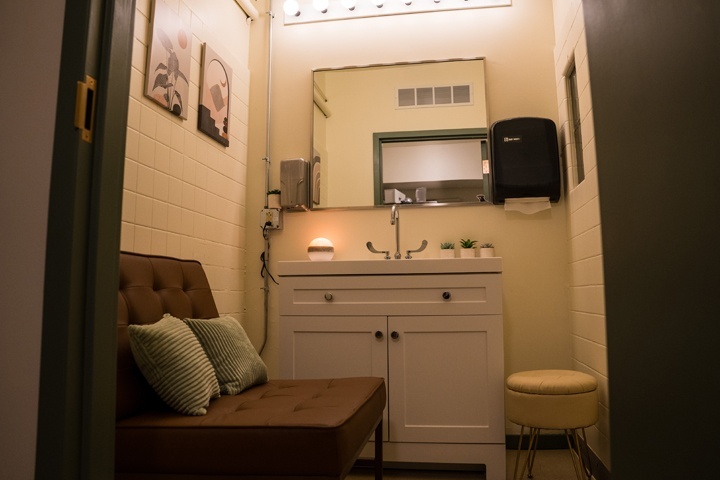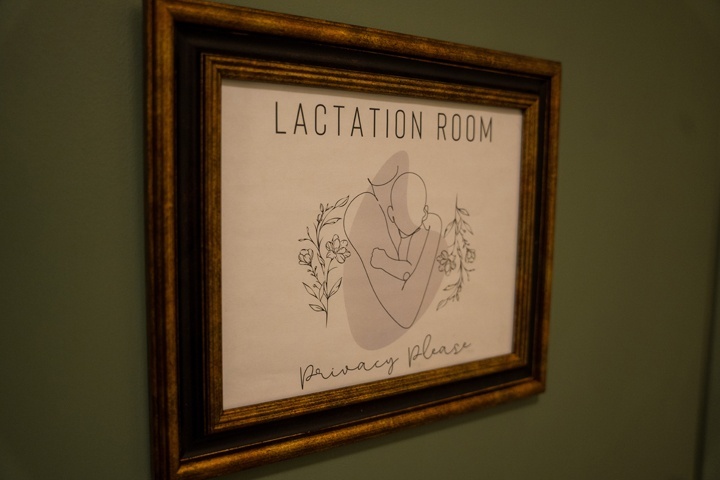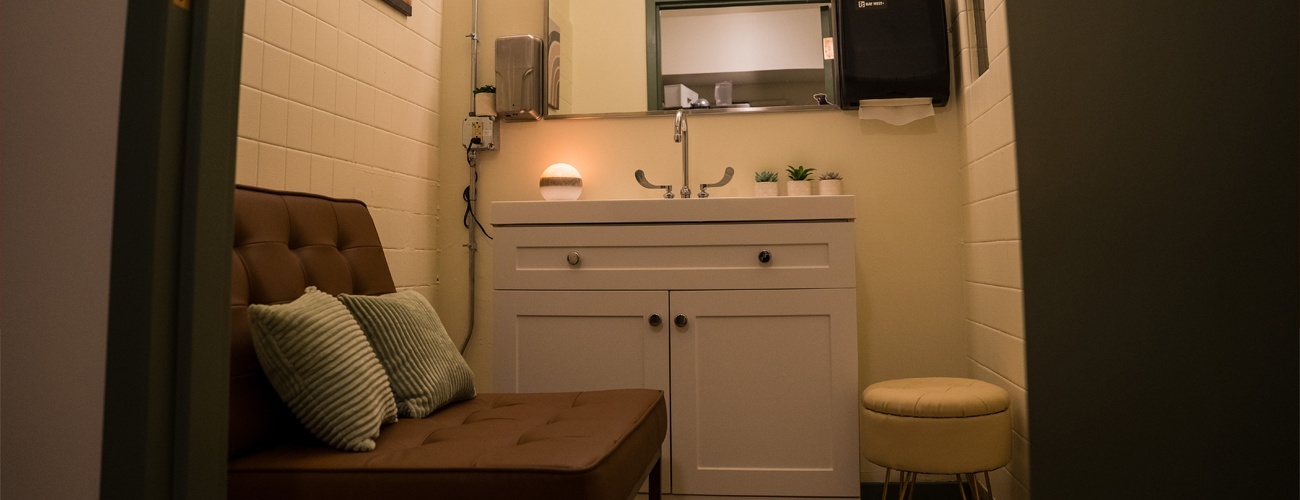In late 2024, the Pittsburgh Cultural Trust opened a new lactation space in the Byham Theater. Learn how the space came to be and experience it through the eyes of a mother and Cultural Trust supporter in this edition of “Accessibility in Action.”
Just last year, if you’d stepped into the Byham Theater storage room at the top of the Ramp Lobby, you’d find a typical backstage area with tables and other operations equipment.
Today, it serves a very different purpose.
Complete with a sink, counter, electrical outlets, and seating, the room has been transformed to give nursing parents a comfortable space to breastfeed, pump, or bottle feed while attending a performance.

If you’re a nursing parent—or you have one in your life—we hope you can benefit from the lactation space during your next visit. Until then, you can experience it through the eyes of Cortney Bagnato, a mother of two, a content creator, and an arts enthusiast.
This spring, we invited Bagnato to watch Malandain Ballet Biarritz perform at the Byham Theater. But before she took in the breathtaking costumes and dance moves, we asked her to check out the lactation space for herself.
After her visit, she highlighted three positive aspects.
First, she appreciated the privacy: “I liked how it was out of the way, but at the same time, everyone on staff knew where to direct me.”
Second, she mentioned comfort. In particular, she liked how the chair was bigger, giving a nursing mother and a young child enough room to move around on the seat.
And third, she admired the “cute and cozy” aesthetic in the space.
Rewind: How the Lactation Space Came to Life
The idea to create lactation spaces in Cultural Trust venues began with a small internal team of DEAI (Diversity, Equity, Accessibility, and Inclusion) committee members.
They started by adding a lactation space to the Cultural Trust’s biggest venue, the Benedum Center. You can check out their handiwork (and benefit from their efforts) by visiting that lactation space on the Promenade level, near the Patron Bar. Recently, that space was even nominated for an Allegheny County Award by a guest.
With this experience under their belts, they shifted their focus to the Byham Theater.
In both spaces, the team prioritized privacy, comfort, and a welcoming environment—the same qualities that Bagnato noticed during her visit.
Achieving those qualities came down to the details.
Katie Colwell, Director of Operations, says that in terms of privacy, for example, the team needed to find the correct kind of lock so that patrons would feel secure.
For the sink, they went with a model that had separate knobs, unlike the automatic faucets in other parts of the theater. That's because they needed users to be able to adjust the temperature.
The furniture was also chosen with care. “We made sure that the chairs didn’t have arms and that the side tables were light so that parents could easily maneuver how they needed to,” she adds.
In selecting each item, the team took a practical approach. Or, as Vanessa Braun, Director of Accessibility, puts it: “function over frills.”
At the same time, the space needed to feel intentional and inviting. “We didn’t want the space to feel like a storage closet,” Colwell notes. That’s why the team added a few thoughtful touches, like artwork, pillows, and a soft paint color (loud colors can distract infants as they're nursing).

From the chair to the sink, all of their choices were informed by online research and advice from family and friends.
“Lots of parents were consulted,” Braun explains. “My sister, Katie’s family, our coworkers. Neither of us is a parent and we really wanted to have a space that was going to work for all our guests who are also new parents.”
The Engineering Team helped bring the team’s ideas to life by connecting a water line, installing fixtures, and making the space physically accessible.
Once the paint had dried, the lactation room in the Byham Theater opened to the public in late 2024.
As a next step, the team is hoping to add a lactation space to the Harris Theater.
Why Lactation Spaces Matter
For parents who breastfeed, finding time—and a space—to pump, bottle feed, or nurse is a constant part of daily life. In fact, most of those individuals need to express milk every 3 to 4 hours, no matter where they are.
That often means nursing in public—an activity that it often stigmatized. According to Breastfeeding Medicine, 63% of breastfeeding parents report the need to nurse in public at some point, but only 38% feel comfortable doing so.
Bagnato understands that tension all too well.
“I remember once being at a shopping mall without a lactation space, and I had to go to my car to nurse—which isn’t ideal,” Bagnato says. A stressful situation like this one doesn’t just cause discomfort, she says; it can also interfere with milk production.
When Bagnato reflects on her days of nursing, she remembers moments of relief too—like the lactation space at a Pittsburgh Penguins game when her baby was 7 months old.
“We were sitting too close to the center speaker, and every time a goal was scored, the noises got really loud,” she explains. “Getting him to a quiet space was really helpful in that moment—and there was even a TV in the room, so we could still watch the game.”
These experiences are why lactation spaces, at the Byham or in any public place, can make a big impact.
“We know we’re not the first to create a lactation space, and we won’t be the last,” said Braun. “We just hope that the room can make some of our guests’ day or night out easier.”
